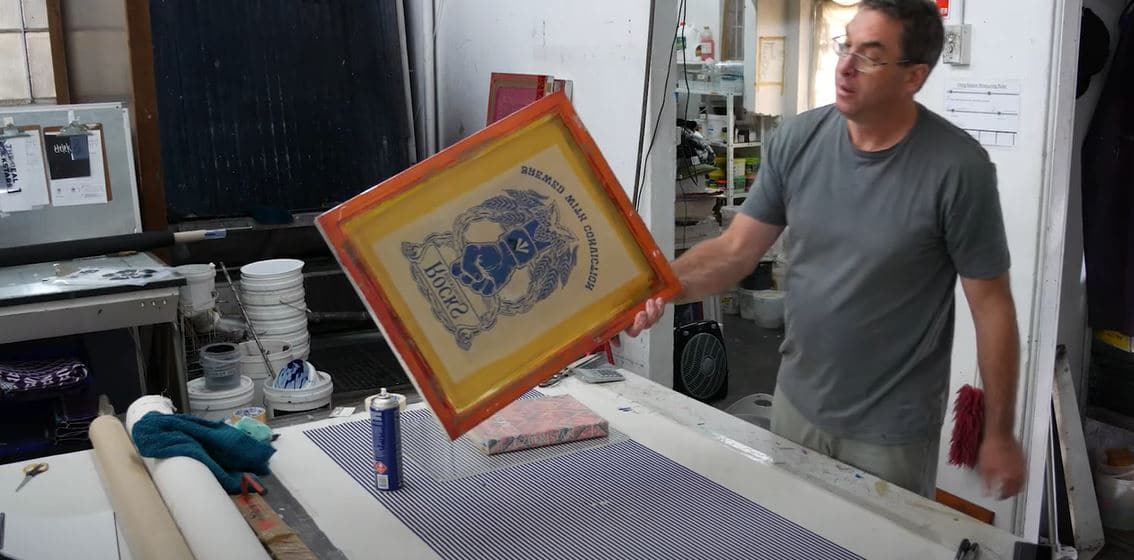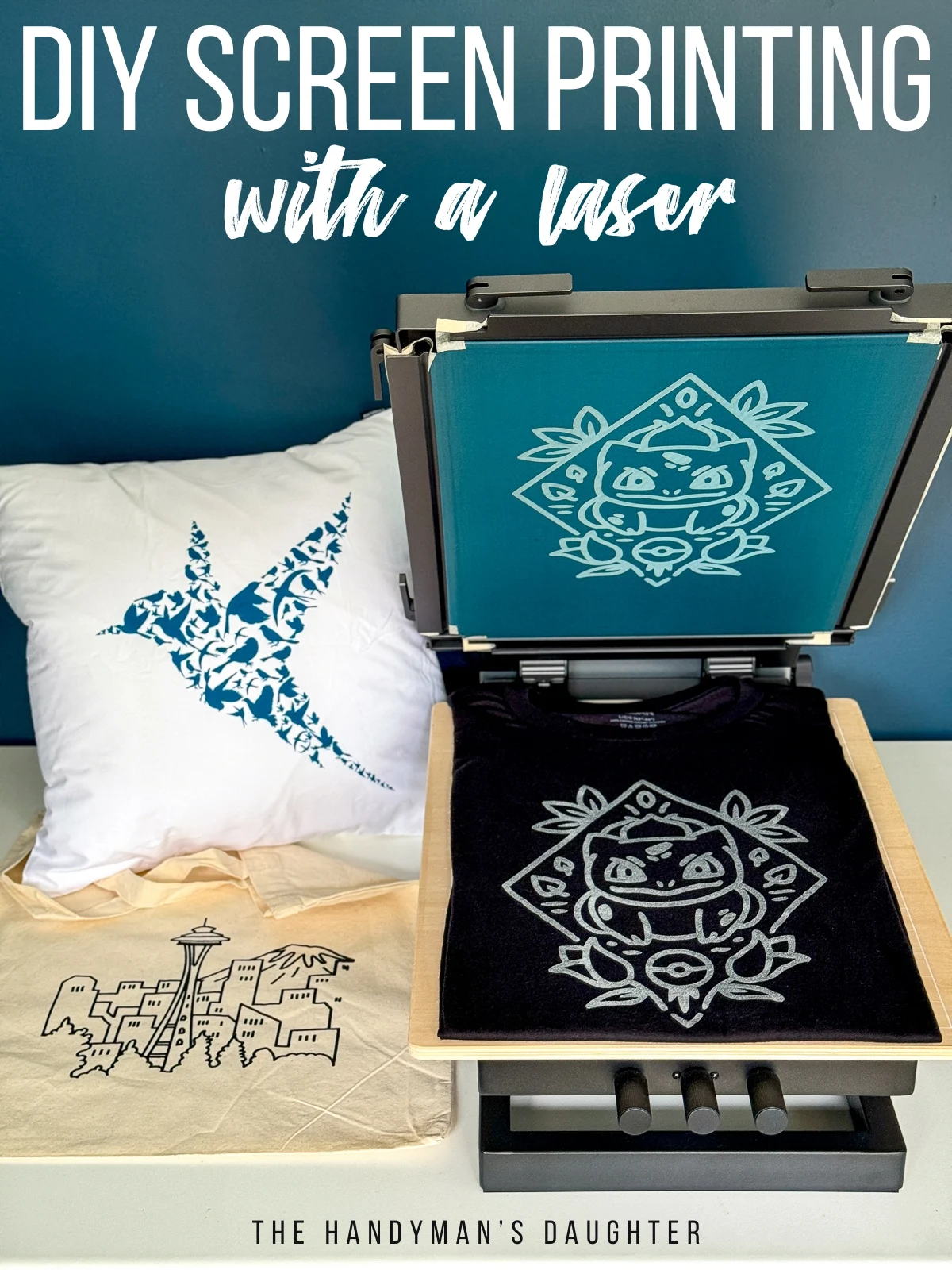Discover the Different Sorts Of Screen Printing Techniques for Your Following Project
Screen printing offers a varied variety of methods that can improve any type of innovative job. From standard approaches like serigraphy to contemporary developments such as direct-to-garment printing, each method has its unique benefits. Specialized choices, consisting of eco-friendly and metallic inks, introduce a lot more possibilities. Understanding these methods can greatly impact the final result. The obstacle lies in picking the most ideal technique for specific needs and wanted impacts. What aspects should one take into consideration?

The Basics of Screen Printing
Screen printing may appear facility, it is essentially an uncomplicated process that entails transferring ink through a mesh screen onto different surface areas. The method begins with the production of a pattern, which specifies the layout to be printed. This stencil is affixed to a mesh screen, usually made of polyester or nylon. Once the pattern is in location, ink is related to the screen and pressed via the mesh utilizing a squeegee, causing the preferred pattern being printed on the underlying product.
Screen printing can be done on a vast array of substratums, consisting of paper, material, and plastic, making it a versatile selection for numerous jobs. The procedure permits for lively shades and elaborate styles, making it prominent in markets such as fashion, advertising and marketing, and art. Recognizing these basics equips people with the foundational understanding called for to check out advanced methods in screen printing.
Standard Screen Printing Techniques
Typical screen printing strategies have actually been employed for centuries, protecting the craftsmanship and creativity of this method. This technique utilizes a mesh screen to transfer ink onto a substratum, such as material or paper, permitting resilient and lively designs. The procedure begins with producing a pattern, which obstructs certain areas of the screen to regulate where the ink will certainly be applied.
One popular technique is serigraphy, usually made use of for limited editions and imaginative prints. Another is making use of water-based inks, which are environmentally friendly and supply a soft feeling on textiles - 10:9 Design Abilene. In addition, traditional approaches can consist of hands-on printing, where craftsmens apply ink with a squeegee, ensuring precision and interest to information
These methods remain valued in the market for their tactile high quality and the distinct structures they create, appealing to both creators and customers who value the heritage of screen printing.
Digital Screen Printing Innovations
As the demand for faster production and personalization in the printing industry has actually surged, digital screen printing innovations have actually arised as a game-changer. This innovation blends typical screen printing methods with electronic processes, allowing for quick prototyping and elaborate layouts that were previously difficult to accomplish. One significant improvement is the introduction of direct-to-garment (DTG) printing, which promotes top notch, full-color prints on numerous textiles without the demand for screens. Furthermore, improvements in ink formulas have actually caused eco-friendly options that maintain vivid colors while minimizing environmental influence. The use of automated systems better streamlines manufacturing, minimizing labor costs and improving accuracy. These developments not only accommodate tiny batch orders and personalized designs but additionally enable quicker turn-around times, making them ideal for businesses focused on conference consumer demands in a fast-paced market. Digital screen printing, consequently, stands for a necessary development in the domain of printing techniques.
Specialized Screen Printing Approaches
Exploring specialty screen printing methods exposes a diverse array of methods that push the boundaries of creative thinking and performance in the printing sector. Among these, glow-in-the-dark inks offer a special visual result, making styles come active in low-light conditions. Metallic inks, understood for their sparkling surface, add a touch of high-end to printed materials. One more innovative approach is discharge printing, which removes dye from the material rather than adding ink, leading to a soft, vintage feel. High-density printing creates a raised texture on the surface, improving tactile interaction. Additionally, water-based inks are obtaining appeal for their vibrant colors and minimized environmental impact. Each of these specialized techniques provides to details design needs, making it possible for brands and artists to produce standout items that resonate with their audiences. By leveraging these techniques, organizations can raise their screen printing tasks to new heights, ensuring memorable perceptions.
Eco-Friendly Screen Printing Options
Eco-friendly screen printing options are gaining grip as the industry moves in the direction of sustainability. Sustainable ink selections and using eco-friendly products are crucial elements in reducing the environmental influence of the printing process. By adopting these techniques, screen printers can add to a more lasting future while preserving top notch outcomes.
Lasting Ink Options

Biodegradable Products Use
As the screen printing sector develops, the incorporation of naturally degradable materials is coming to be significantly crucial for ecologically conscious practices. Manufacturers and designers are currently discovering inks and substratums made from all-natural, renewable energies that decay extra effectively than conventional counterparts. These eco-friendly alternatives reduce plastic waste and reduce environmental impact, straightening with the expanding need for lasting products.
Typical examples consist of water-based inks and organic cotton fabrics, both of which minimize dangerous chemicals and advertise eco-friendliness. Brand names that embrace these materials typically enhance their market allure, bring in consumers who focus on sustainability. As understanding of ecological problems continues to click here increase, the shift in the direction of biodegradable materials in screen printing is most likely to acquire energy, fostering a greener industry standard.
Picking the Right Method for Your Project
How can one figure out one of the most ideal screen printing technique for a certain job? The choice rests on a number of factors, consisting of the product to be printed on, the intricacy of the design, and the desired manufacturing volume - 10:9 Design reviews. For example, direct-to-garment printing is ideal for intricate layouts with many shades, while traditional screen printing succeeds for larger runs of simpler graphics
In addition, consideration of the end-use of the printed thing is vital. For exterior applications, strategies that provide longevity and weather condition resistance, such as plastisol ink, might be favored. Alternatively, environmentally-conscious projects may benefit from water-based inks or eco-friendly products.
Ultimately, understanding the job's special needs permits for an enlightened selection, making certain both aesthetic charm and practical durability. By examining style complexity, material compatibility, and production range, one can properly choose one of the most appropriate screen printing technique to fulfill their task's objectives.
Frequently Asked Inquiries
What Is the History of Screen Printing?
Screen printing came from old China around 1000 ADVERTISEMENT, advancing via Japan and Europe. By the 20th century, it came to be preferred in business art and style, reinventing exactly how designs were generated and dispersed around the world.

Exactly how Do I Prepare Art Work for Screen Printing?
To prepare art work for screen printing, one must ensure high resolution, make use of an appropriate shade setting, create different layers for every shade, and convert text to details, assuring compatibility with the printing procedure and desired result.
What Materials Are Best for Screen Printing?
The best materials for screen printing consist of high-grade inks, durable screens, and ideal substratums like cotton, polyester, or blends. In addition, utilizing suitable solution and squeegees can boost the printing procedure and outcomes.
Can I Screen Print at Home?
Yes, screen printing in your home is possible. With the ideal products, arrangement, and techniques, individuals can create premium prints. However, cautious factor to consider of work area and tools is crucial for successful results.

What Prevail Mistakes in Screen Printing?
Usual errors in screen printing include incorrect exposure times, poor ink consistency, imbalance of screens, inadequate cleansing of materials, and neglecting to check prints. These errors can endanger the high quality and accuracy of the final product.
Screen printing might appear complex, it is basically an uncomplicated process that involves transferring ink through a mesh screen onto different surfaces. As the need for faster manufacturing and modification in the printing sector has surged, electronic screen printing developments have actually emerged as a game-changer. Discovering specialized screen printing methods discloses a diverse variety of techniques that press the boundaries of creative thinking and performance in the printing sector. The best products for screen printing include high-quality inks, long lasting screens, and ideal substrates like cotton, polyester, or blends (10:9 Design Company). Common errors in screen printing consist of improper exposure times, inadequate ink consistency, imbalance of screens, insufficient cleaning of materials, and overlooking to check prints